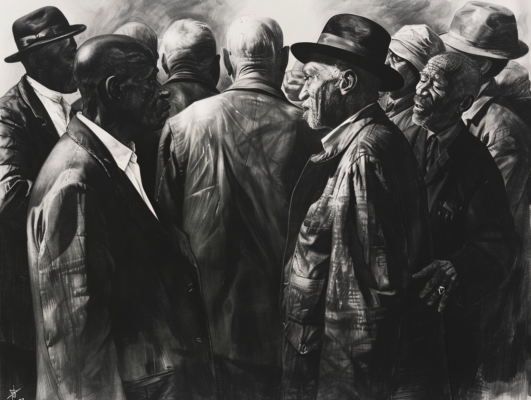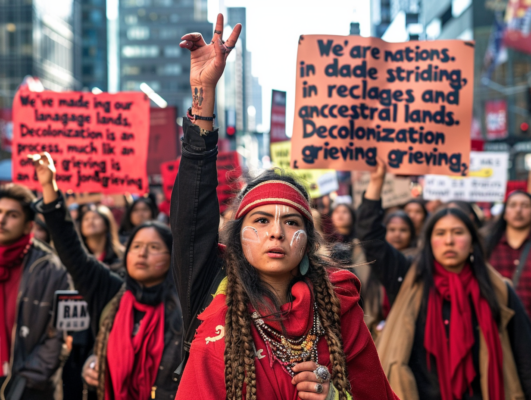In the heart of a bustling city, a small group of Native Americans gathered to share their stories. They spoke of identity, resilience, and the intricate ties to their heritage that define their lives. Among them was an Apache who preferred the term “native” over “Native American.”
Embracing Identity
“I’m Apache, but really that’s the government’s name because they can’t say tseh-tseh-gay-in-deh,” she began. “People often tell me how awesome it is that I’ve decided to embrace my culture. It feels strange because I didn’t decide to be a part of my culture; I live it every day.”
She paused, contemplating the weight of her words. “For me, being indigenous means having an intimate and interconnected relationship with our homeland. Land is tied to every aspect of who we are. Living in the city constantly reminds me of my people’s erasure, as if we’re invisible to the world.”
Encountering Racism
The conversation shifted to their experiences of racism. “I’ve had older white men approach me, saying things like, ‘If this was 40 years ago, I could do whatever I wanted.’ They liken us to exotic animals on display, property to be owned and controlled.”
The Complexity of Identity
Another woman chimed in, reflecting on the complexity of identity and the concept of blood quantum. “We’re treated like animals. They monitor our blood quantum, just like dogs and horses. Imagine a pizza cut into 32 slices. Of those, I’m 28 Apache. That’s how they quantify my identity. Native Americans are the only minority group in the U.S. who have to prove their nativeness with an Indian card.”
She continued, “This system divides us. It can make some feel superior to others. I used my ‘full-blooded’ status to feel better about myself. The one-drop rule for black blood was meant to oppress, while one drop of anything else dilutes our nativeness.”
Mixed-Race Heritage
The story of mixed-race heritage resonated deeply within the group. “My sisters are short one-sixteenth of a degree. Does that mean their pinkies aren’t Apache? Being mixed-race is common in our tribe, but it’s the admixture of black blood that causes tension. My grandfather hides when tribal members visit, ashamed of his complexion.”
The Government’s Role
They spoke of the future and the government’s role in their survival. “If it were up to the government, we wouldn’t be here. They hope our blood will dilute over time, absolving them of treaty obligations and freeing up our land and resources.”
Fighting for Sovereignty
Despite these challenges, they remained steadfast in their fight for sovereignty and cultural preservation. “We are nations. We’ve made strides in decolonizing and reclaiming our languages and ancestral lands. Decolonization is an ongoing process, much like grieving.”
A Voice of Defiance
In the end, one voice rose above the rest, filled with pride and defiance. “My name may not be a romanticized Hollywood Indian name, but it means everything to me. It signifies that my family survived disease, Catholicism, and colonialism. I survived. My existence is resistance. Saying my name, Skiam Tulks, is an act of resistance.”
Their stories painted a vivid picture of the struggles and triumphs of Native Americans. It was a testament to their resilience, a reminder that their heritage is not a choice but a living, breathing part of their identity.









